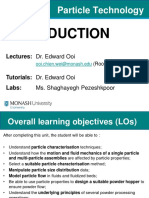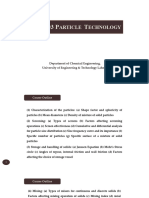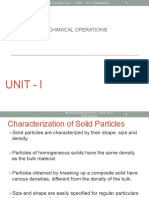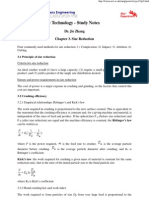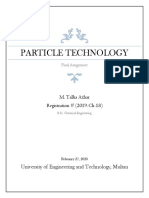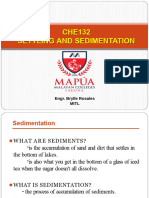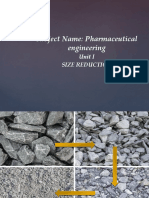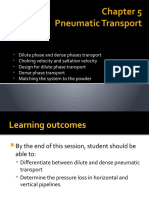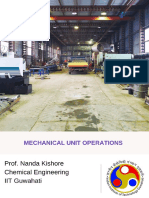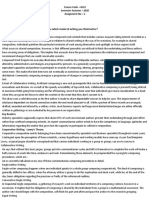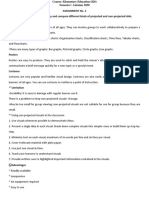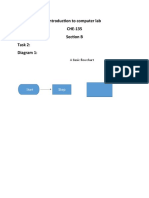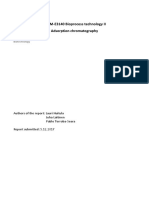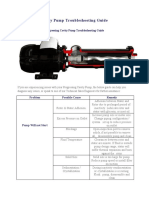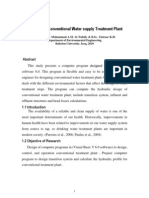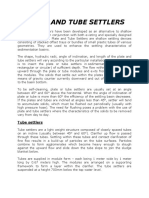0% found this document useful (0 votes)
581 views20 pagesLecture 1 Particle Technology (Introduction)
This document provides an introduction to the course "Particle Technology". It discusses key topics that will be covered including characterizing particles, processing techniques like mixing and size reduction, storage and transport, separation methods, and unit operations involving particles. The course objectives are to introduce particle technology concepts and characterize particulate systems. It outlines a weekly lecture plan covering various particle characterization, handling, separation, and processing methods and includes example problems. Reference books are also listed.
Uploaded by
Muhammad kashifCopyright
© © All Rights Reserved
We take content rights seriously. If you suspect this is your content, claim it here.
Available Formats
Download as PPTX, PDF, TXT or read online on Scribd
0% found this document useful (0 votes)
581 views20 pagesLecture 1 Particle Technology (Introduction)
This document provides an introduction to the course "Particle Technology". It discusses key topics that will be covered including characterizing particles, processing techniques like mixing and size reduction, storage and transport, separation methods, and unit operations involving particles. The course objectives are to introduce particle technology concepts and characterize particulate systems. It outlines a weekly lecture plan covering various particle characterization, handling, separation, and processing methods and includes example problems. Reference books are also listed.
Uploaded by
Muhammad kashifCopyright
© © All Rights Reserved
We take content rights seriously. If you suspect this is your content, claim it here.
Available Formats
Download as PPTX, PDF, TXT or read online on Scribd
/ 20
